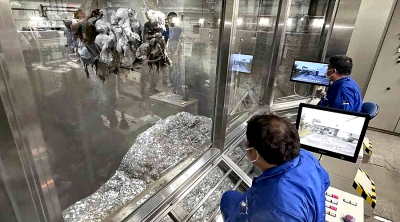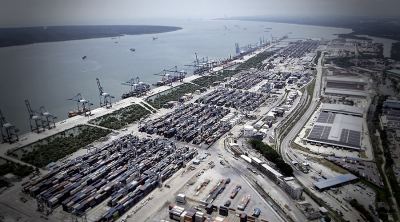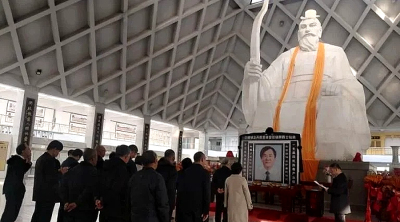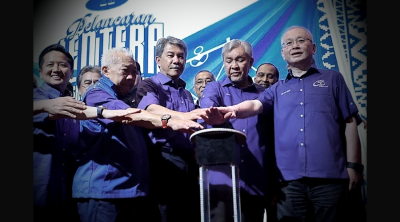The only nation to challenge Chinese domination in the recently concluded SCO (Shanghai Cooperation Organization) and the BRICS summit was India.
India, whose Chandrayaan 3 mission successfully landed on the moon, had a special moment during the BRICS summit.
India disagreed with multiple Chinese proposals in both summits.
The Chinese assume that India will reject any suggestions from their side solely because of a decline in bilateral ties.
A Global Times editorial, commenting on the BRICS summit, highlighted India’s negative view of China by mentioning, “India continuously connects the border issue with other issues, damaging the relationship between the two countries, and even obstructing China’s initiatives in multilateral cooperation mechanisms such as the SCO and BRICS.”
The two nations have had a troubled relationship in the past few years, commencing with Chinese intrusions in 2020 resulting in the Galwan clash.
China had hoped to push India militarily on the defensive, but failed.
Not only has India matched Chinese deployment along the LAC but also sped up construction of infrastructure.
The Yangtze clash of December last year, displayed Indian determination.
While talks between the two nations led to disengagement at almost all friction points, two locations, which predate the 2020 incursion, Demchok and Depsang, remain.
Recent marathon talks between military commanders at the Lt Gen and Maj Gen levels, spread over six days, possibly resulted in a sharing of options; however final resolution remains sticky.
It did appear that these marathon talks were based on instructions from the hierarchy on both sides hoping for an amicable solution, and opening doors to a final resolution.
It was in this muddle that Prime Minister Modi and President Xi Jin- ping exchanged a few words on the sidelines of the BRICS summit in Johannesburg.
While the Indian government announced its perception of the talks, the Chinese changed their statement within a day.
As per the Indian foreign secretary, Vinay Kwatra, “in his conversation with President Xi Jinping, the PM highlighted India’s concerns on unresolved issues along the LAC. The PM underlined that maintenance of peace and tranquility in border areas, observing and respecting the LAC are essential for normalization of bilateral relations.”
Kwatra added, “The two leaders agreed to direct their relevant officials to intensify efforts at expeditious disengagement and de-escalation.”
The initial Chinese statement mentioned, “President Xi stressed that improving China-India relations serves common interests of both the countries. The two sides should bear in mind the overall interests of their bilateral relations and properly handle the border issue so as to safeguard peace and tranquility in the border region.”

Subsequently, the Chinese foreign ministry spokesperson in Beijing, claiming that talks were initiated on an Indian request, mentioned, “We hope to work with India to act on important common understanding between the two leaders, increase strategic mutual trust, focus on our consensus and cooperation, reduce disturbances and obstacles and advance bilateral relations along a sound and stable track.”
There was no mention of “efforts to speed up disengagement and de-escalation.”
Differing perceptions between the nations was evident. Both sides stuck to their stands.
While India reiterated its stance that resolution of the LAC precedes restoring bilateral relations, China re-emphasized its stand that the LAC and bilateral ties should not be linked, hinting India accept the current deployment as the new LAC.
Further, while India suggested resolution of the standoffs, China ignored the subject. China claimed that talks were initiated at the Indian request, which India denied, adding that there was a Chinese request pending.
Earlier disengagements along the LAC led to creation of buffer zones, denying both nations patrolling rights to their designated claim lines.
The recent agreement reached in military talks has been on no creation of new posts, delineated limits of patrolling as also sharing information on movement of patrols, all to prevent any untoward incident.
The Yangtze clash in the Tawang Sector occurred soon after the conversation between the two leaders at Bali on the sidelines of the G20 summit last year, when they jointly agreed to “stabilize bilateral relations.”
Hence, India remains wary. The next G20 summit is scheduled in Delhi on 9-10 September and Mr Xi is expected to be present.
As the host nation, the PM would be expected to interact with almost all who attend. With current ties being what they are, the India-China engagement is unlikely to be anything more than what was witnessed at Bali or Johannesburg, and will just be a sideline conversation.
The Doklam standoff was resolved in a similar conversation between the two leaders during the G20 summit in Hamburg, Germany, in August 2017, leading to a Modi-Xi meeting at the BRICS summit in China the following month.
Whether there will be a thaw prior to the G20 summit is to be seen.
While India seeks de-escalation, there are others with differing perceptions.
For the US, continued Indo-China rivalry draws India deeper into its anti-China groupings.
In case Indo-China ties normalize, the possibility of China invading Taiwan increases.
For Pakistan, Indian concentration remaining northwards is a strategic benefit.
Russia would prefer normalcy as it would bring the RIC (Russia- India-China) trilateral back into focus.
Chinese statements indicate that a resolution is unlikely. Even if there is a push by both leaders, complete disengagement may not happen in this short period.
What can be expected is a limited withdrawal, projecting a positive intent. This could set the tone for a bilateral agreement between the two nations.
For the Indian dispensation, disengagement also has political overtones as it is being continuously exploited by the opposition, claiming loss of territory.
De-escalation, implying pulling back of additional troops, is still some distance away as both nations have constructed additional habitats as also there is deterioration in trust. In case a stalemate remains, it benefits the opposition.
Even if the LAC reverts to the pre-April 2020 position, India will continue developing its military power and infrastructure as a deterrent, while monitoring the LAC closely.
The trust deficit between the two nations will remain. Further, annual summits between India and China, as before 2020, are unlikely to resume.
India’s western leaning would not change. India will continue challenging Chinese domination in Asia as also other global forums.
India, as a growing global power, is no longer hesitant to confront China.
(Harsha Kakkar is a retired Major-General of the Indian Army.)
ADVERTISEMENT
ADVERTISEMENT








































